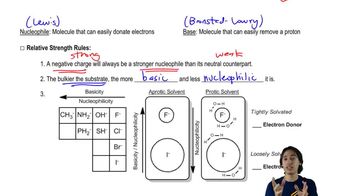What product is formed when 3-methyl-2-cyclohexenone reacts with each of the following reagents?
c. HBr
d. CH3CH2SH

 Verified step by step guidance
Verified step by step guidance Verified video answer for a similar problem:
Verified video answer for a similar problem:



 8:27m
8:27mMaster Nucleophilic Addition with a bite sized video explanation from Johnny
Start learning